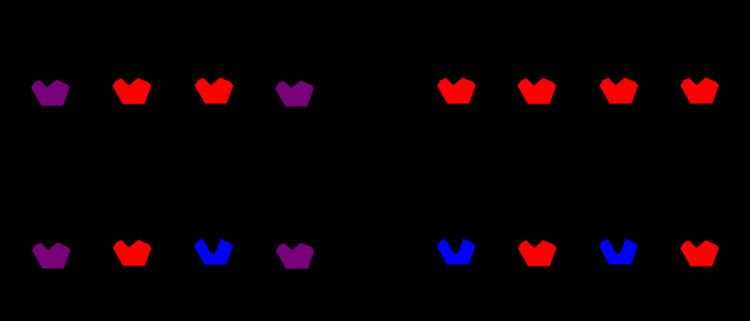 | ||
The Sznajd model or United we stand, divided we fall (USDF) model is an econophysics model suggested in 2000 introduced to gain fundamental understanding about opinion dynamics using methods from statistical physics. The Sznajd model implements a phenomenon called social validation and thus extends the Ising spin model. In simple words, the model states:
Contents
- Mathematical formulation
- Findings for the original formulations
- Modifications
- Relevance
- Applications
- References
Mathematical formulation
For simplicity, one assumes that each individual
In the original 1D-formulation, each individual has exactly two neighbors just like beads on a bracelet. At each time step a pair of individual
- If
S i = S i + 1 S i − 1 = S i S i + 2 = S i - If
S i = − S i + 1 S i − 1 = S i + 1 S i + 2 = S i
Findings for the original formulations
In a closed (1 dimensional) community, two steady states are always reached, namely complete consensus (which is called ferromagnetic state in physics) or stalemate (the antiferromagnetic state). Furthermore, Monte Carlo simulations showed that these simple rules lead to complicated dynamics, in particular to a power law in the decision time distribution with an exponent of -1.5.
Modifications
The final (antiferromagnetic) state of alternating all-on and all-off is unrealistic to represent the behavior of a community. It would mean that the complete population uniformly changes their opinion from one time step to the next. For this reason an alternative dynamical rule was proposed. One possibility is that two spins
- Social validation remains unchanged: If
S i = S i + 1 S i − 1 = S i S i + 2 = S i - If
S i = − S i + 1 S i − 1 = S i S i + 2 = S i + 1
Relevance
In recent years, statistical physics has been accepted as modeling framework for phenomena outside the traditional physics. Fields as econophysics or sociophysics formed, and many quantitative analyst in finance are physicists. The Ising model in statistical physics has been a very important step in the history of studying collective (critical) phenomena. The Sznajd model is a simple but yet important variation of prototypical Ising system.
In 2007, Katarzyna Sznajd-Weron has been recognized by the Young Scientist Award for Socio- and Econophysics of the Deutsche Physikalische Gesellschaft (German Physical Society) for an outstanding original contribution using physical methods to develop a better understanding of socio-economic problems.
Applications
The Sznajd model belongs to the class of binary-state dynamics on a networks also referred to as Boolean networks. This class of systems includes the Ising model, the voter model and the q-voter model, the Bass diffusion model, threshold models and others. The Sznajd model can be applied to various fields:
